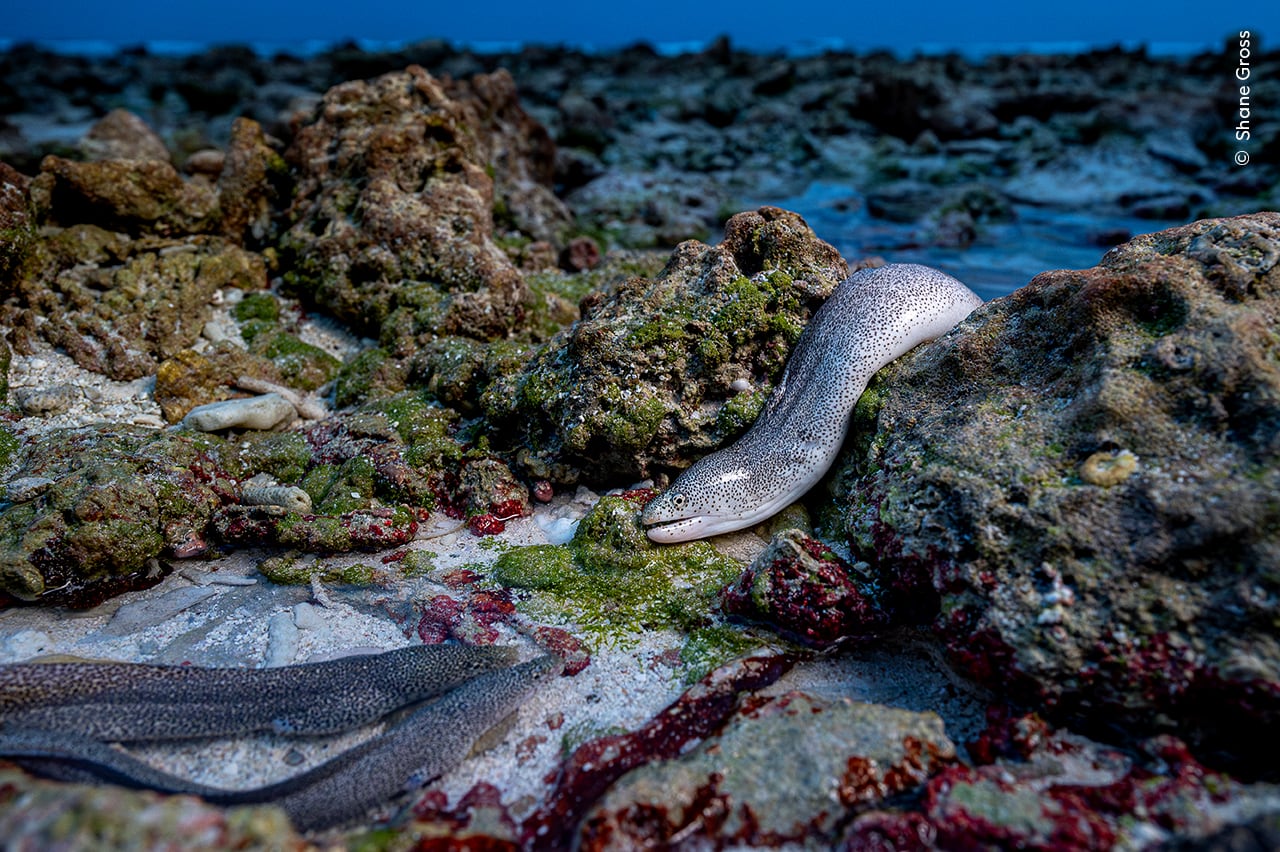A hyena roaming an abandoned mining town and a beetle sitting still and watching the destruction of its forest habitat have won the Wildlife Photographer of the Year competition.
Two top prize winners and 19 category winners were announced on Wednesday by the Natural History Museum in London, which has been running the competition for 61 years.
South African wildlife photographer Wim van den Heever has been named Wildlife Photographer of the Year. Ghost Town Visitornight photograph of a brown hyena among the ruins of an abandoned diamond mining town in Kolmanskop, Namibia. This species passes through on its way to the coast of the Namib Desert to hunt Cape fur seal pups.
Van den Heever spotted the footprints of the world's rarest hyena in Kolmanskop ten years ago and dreamed of capturing the scene. He spoke to a local conservationist who said the animals were coming in about every four to six weeks. “Every time I visited a ghost town, I set up camera traps in hopes of success,” he recalled in the photo description. “It took me 10 years to finally get this one image of a brown hyena in the most perfect frame imaginable. I was delighted.”
Andrea Dominici from Italy won the Young Wildlife Photographer of the Year title for After the Destruction. This is a close-up of a longhorned beetle on a mossy log overlooking an abandoned car from a logging operation in the Lepini Mountains in central Italy.
Nanaimo, British Columbia photographer Shane Gross, WHO won the main title of the competition last yearrwas the only Canadian category winner in 2025 to capture Animals in Their Habitats with his photograph. Like an eel out of water.
Gross said he took the photo while on assignment for the nonprofit Save Our Seas Foundation on D'Arros Island in the Seychelles archipelago in Africa. The island was recently declared a restricted marine protected area, where fishing and even shell collecting are prohibited.
The goal was to document changes before and after protection, the impact of restoration to replace coconut plantations with native vegetation, and the work of scientists to monitor changes.
Although the area is rich in wildlife such as sharks, rays, nesting sea turtles, seabirds and even giant turtles that are being reintroduced, Gross acknowledged that these animals are photographed a lot.
So when he first arrived, he asked the scientists to show him something unique. They pointed out to him the peppered moray eels gliding along the shore in search of dead fish washed ashore at low tide.
“I thought, 'Wow, I've never seen anything like this before,'” he recalls, and set about catching small eels no more than two fingers thick. The animals turned out to be very shy, and it took him almost the entire expedition to get the desired photo.

Gross said the eels often found fish larger than themselves that didn't have arms, making it difficult for them to bite off pieces. Some tied themselves into knots or relied on each other for leverage. He was amazed by the fish's remarkable ability to see and smell prey both above and below water.
He hopes the photo will allow viewers to admire an animal that is “not on most people's radar.”
Many marine protected areas allow fishing and are often created to protect specific species, such as sharks or sea turtles, he said. He believes this is not enough: “Species need an ecosystem in which they can live.” While on D'Arros Island, he observed the interdependence and connectedness of the species that lived there; for example, seabirds that hunt fish in the sea and then transport these nutrients to land by fertilizing plants with their guano.
The no-go marine protected area takes that into account and “protects everything, top to bottom,” he said, including animals we don't think about, like eels.
The winning photographs were among 100 chosen from more than 60,000 entries to be featured in an exhibition opening at the Natural History Museum in London this Friday.
Canadians will be able to see them in person at the Royal Ontario Museum in Toronto from November 8, 2025 to March 29, 2026.








